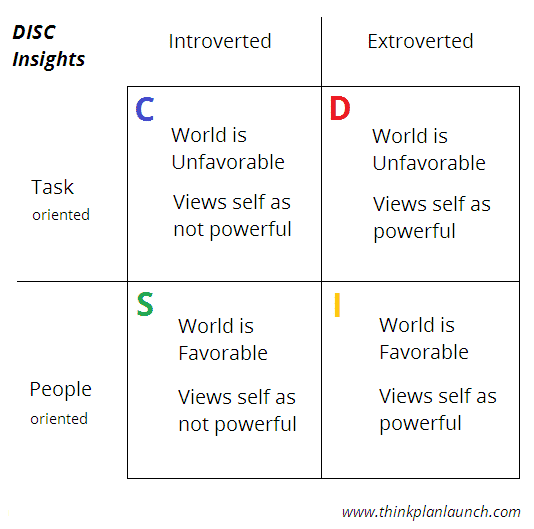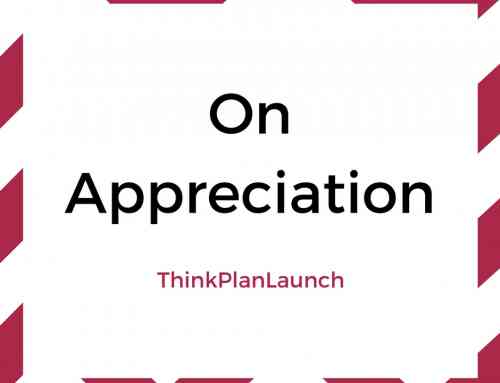In this article, we will explore the nature of the “High-S” as ranked by a DISC test.
Table of Contents
Reminder: DISC measures behavior and communication style.
When we talk about the “nature” of the High-S, what we are referring to is their visible behavior and communication style.
Remember, DISC is not actually a measure of personality even though many people think of it that way. Behavior and communication style are but two components of personality, which is comprised of many more elements.
“S” stands for Steadiness.
The letter “S” in High-S stands for Steadiness. The High-S is someone who is supportive, reliable, and a team player. They can sometimes be quiet and non-expressive, but their personable nature makes them good at working with others and maintaining high trust levels. The High-S is often the glue, or anchor, that holds people and projects together.
Summary of the High-S.
- Stable, consistent, and patient.
- Steady, predictable, and passive by nature.
- People-oriented and introverted.
- Views world as favorable.
- Views self as not powerful.
- Communicates in an unemotional, friendly manner.
- Team player; has an intrinsic need to be of service to others.
- May be perceived as non-expressive; may be too hard on themselves.
- Examples: Laura Bush, Mr. Rogers, Tom Brokaw.
Adjectives that Describe the High-S.
The High-S is aware of people’s needs and seeks to support them – steadily and consistently until the job is done! Here is a list of adjectives associated with the High-S:
- Stable
- Steady
- Deliberate
- Predictable
- Patient
- Non-expressive
- Resistant to Change
- Relaxed
- Phlegmatic
At the extreme (or when under stress), the High-S can “shut down” and shut off – making them apparently seem indifferent even though they are not! This stems from the High-S’s patient and somewhat relaxed approach to dealing with conflict. Whereas many others would be more passionate in their expression, the High-S may not appear to take matters seriously even if they do.
While it’s true that the High-S can unintentionally send the message they don’t care about things, in reality they could not possibly care more – they are some of the most supportive people even if they don’t always know how to show it. When you need someone patient, consistent, and reliable to help you with a project (or in a specific job), consider the High-S – they are likely to stick around for the long haul.
Orientation and Attitude of the High-S.
The High-S is people-oriented (as opposed to task-oriented) and introverted. They view the world around them as favorable. However, they do not believe in their personal ability to effect change upon the world around them. In other words, they view themselves as not holding power over their circumstances.
This graph depicts the situation well for all DISC types:

This graph illustrates how each DISC type views the world around them, and how they view themselves; as well as their fundamental orientations.
Since the High-S views the world as favorable, they tend to have a positive attitude and mix well with others. They are good at looking at the bright side of things and not taking things too seriously most of the time.
As mentioned previously, however, the non-expressiveness of the High-S can often make them seem un-engaged or apathetic. To a High-D manager, this might cause some tension since there is a big difference in pace between the two (High-D = fast pace, direct in communication, High-S = slow pace, non-expressive in communication). The High-S will often do well by adapting their communication style to reflect more urgency when dealing with a High-D manager, and vice versa.
Perhaps the best way to explain how the High-S sees the world is to understand their “relaxed” attitude. The High-S is the tortoise whereas perhaps the High-D or High-I might be the hare. They will stay the course day after day, regardless how conditions may change. Sometimes this consistency can approach the point of fault, but for the most part it’s an excellent quality to have someone so stable and capable of following through on one’s team.
Despite all of the High-S’s strengths, remember: behavior is not a measure of emotional intelligence. Some people may look at the High-S’s supportive nature and assume they have a high EQ, because they’re stable, positive, and reliable. However, this isn’t always the case. The most effective High-S’s do have a high EQ and are incredible at working collaboratively with others; High-S’s with low EQ may more prone to “shutting down” when under stress and not effectively communicate with others.
How the High-S Views Him/Herself.
The High-S typically sees him/herself as considerate and dependable. They try to be thoughtful when dealing with others and strive to be a positive part of the team. The higher the High-S’s emotionally intelligence, the more likely this will be the case.
But How do Others View the High-S?
When the High-S is under moderate stress, others may come to view the High-S as stubborn or non-expressive.
When the High-S is under extreme stress, their behavior might be perceived as overly non-expressive (to the point of apathy) and inflexible. Some may feel the extremely stressed High-S is insensitive, stubborn, or detached.
If you’re not a High-S, what you need to understand about them is that they are basically positive people with good intentions, even if they move at a somewhat slower pace than everyone else. When dealing with the High-S, the rest of us should slow down a bit; and when they are dealing with us, they the High-S should work to express their thoughts and feelings clearly, and pick up the pace of conversation just a bit.
The High-S’s Strengths.
We have already discussed many of the High-S’s positive strengths, such as their stable, consistent nature.
Day by day, they will stay the course and work until a given project or assignment is complete. They may not work incredibly fast and seem to take their time, but they are committed to getting it done and following through in the end.
As friends, employees, and leaders, this is a great skill set that the High-S brings to the table. Almost everyone is in the market for people who are reliable and responsible, after all. They are loyal and will work hard for the right cause. They are process-oriented and will think in an organized, step-wise fashion about their work. Furthermore, the High-S is good at mediating issues between team members and reaching peaceful resolutions.
Because of these qualities, many High-S’s are successful in a variety of roles – including sales, accounting, project management, and other roles where standards and processes have been clearly defined.
The High-S’s Weaknesses.
We have already discussed how the High-S can become non-expressive and detached under stress. But what else is there?
Because the High-S is resistant to change, they may be overly stubborn or inflexible in adopting new processes or procedures – even when the benefits of doing so are clear. Furthermore, since they are less assertive than most – they may need a little hand-holding in getting started with new projects. Otherwise they might wait indefinitely to begin until clear orders are received.
The High-S may stay involved with certain projects too long, beyond the point of sensibility. Once again related to the resistance to change, they may stay the course to a fault at times – even when it’s clear that a shift in direction is overdue.
Finally, the High-S may take things personally, especially direct criticism. Furthermore they may internalize such criticisms and become very hard on themselves as a result. This can become a distraction and further slow their pace.
Tips for Communicating with a High-S.
With the High-S, break the ice in a friendly way. Ask them questions to get their opinions, and be sure not to be overly direct or coarse. Since they are slower and more gentle by nature, rushing straight into business and being cold or direct could upset them, and throw them out of their comfort zone.
Things that will upset a High-S include:
- Being overly direct or demanding.
- Rushing straight into business without beginning with some small talk.
- Asking them to move at a faster pace than they are comfortable with.
Things that will make a High-S happy include:
- Being warm and friendly.
- Remaining gentle and personal in your approach.
- Giving them time to organize their work and follow through with it methodically.
Remember, the High-S views the world around them as favorable but they struggle to believe in their ability to directly influence outcomes. Hence, they need extra time to take action on their objectives in a process-oriented, methodical way. It’s also good to focus on their commitment to process, rather than results.
If you are a High-D, it might be hard for you to relate to the High-S first – but be patient, adapt to their communication style, and give them time. They will warm up and you can build lasting relationships with them.
Tips for Communicating with Others as a High-S.
If you are a known High-S (or you’re pretty sure you are!), here’s what you need to know:
As discussed earlier, others might view you as stubborn or that you don’t care about them if you remain non-expressive indefinitely. At some point, you should make a concerted effort to express your opinions, thoughts, and emotions with others – they desperately need to hear from you in this regard.
Additionally, you may want to check your Emotional Quotient. High scores indicate you’re probably on the right track already in managing your relationships and communication. But even average scores, and especially low scores, can spell trouble – for you, individually – if you let it go unchecked.
By improving your emotional intelligence and people skills, you can channel your High-S energy in a way that motivates others to action and wins them to your cause. Ignore EQ and people skills, however, and you will be frustrated with your results more often than not.
The bottom line for the High-S is they should maintain their positive and steady approach, but work a bit on expressing themselves.
High-S’s: The Bottom Line.
Throughout this article we have critically examined the High-S: they are stable, steady, and reliable. They have a process orientation and achieve results through persistence, and are excellent team players for this reason. However, they would be wise to actively communicate a little more, and make an effort to speak up in meetings and other social engagements.
How much “High-S” energy do you have?
For any given person, all of traits will be expressed relative to their level of “S” (shown on their DISC graph). The higher the “S,” the more prominent, visible, and obvious are the effects – and the more phlegmatic the person becomes. The lower the “S,” the effects are less prominent. The Low-S will generally be more active, restless, and impatient, and may tend to see the slow pace of the High-S as a detriment to progress.
Influence relative to the other three behavioral styles.
“S” traits are also expressed relative to a person’s scores in the other three behavioral areas (Dominance, Influence, and Compliance).
For example, someone with a High-S and a mid-to-high “D” factor may naturally keep a more rapid pace – even with their organized, process-orientation – than a “Pure-S” who’s running at 95% “S” with a low Dominance score.
Someone with a High-S and a mid-to-high “I” factor will tend to believe more in their ability to effect change upon the world, and may take action with more optimism – and without waiting for instructions – than a Pure-S.
And the High-S who has a strong “C” will have an incredible ability to organize themselves, fact-check, and make long-term plans – and then execute them.
All the same, when a person’s “S” is their strongest factor – and it scores high on their graph (above 50-60%) – you will tend to see them display the traits discussed in this article. Similar to gravity, someone’s primary behavioral style is the strongest “pull” factor for them. It’s the one they will return to naturally, at rest, and/or under stress.
Moving forward.
If you know High-S’s or have them in your life, congratulations – you have just learned a whole lot about them! You now know how to communicate with them more effectively, and you understand them better. You also know how outgoing and optimistic they are, and how to communicate with them most effectively.
If you are a High-S, you also get a big congratulations! You have learned about yourself, including your strengths and limitations – and what to do about them. Focus on improving your emotional intelligence, and lean on others as necessary to guide you at times (those with other behavioral strengths). This will keep you on track to achieve your many goals in the most efficient way possible.




Leave A Comment